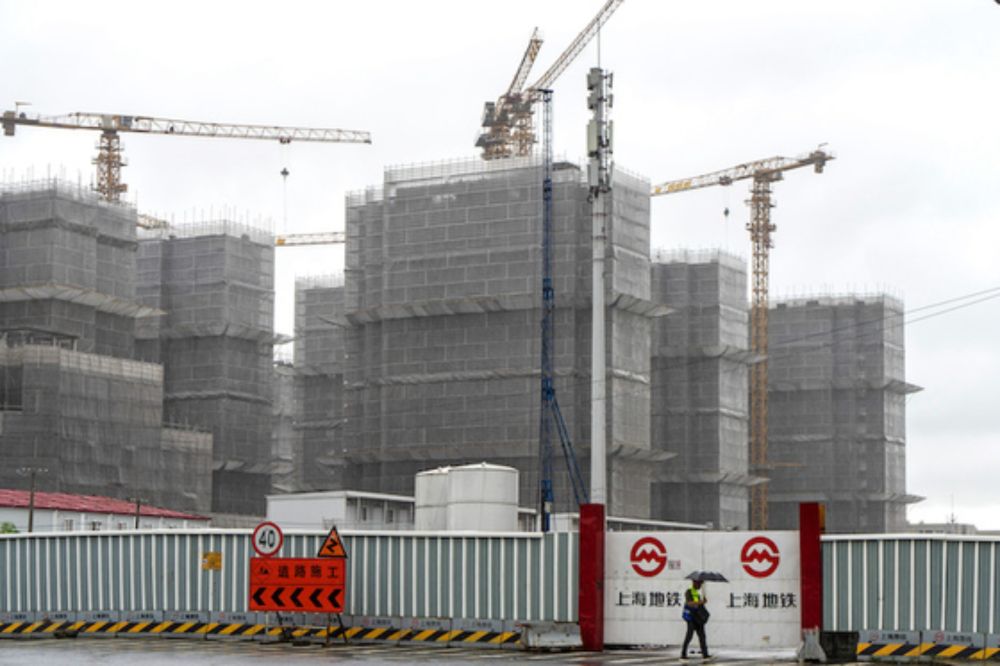
Senior Fellow at Carnegie China. For speaking engagements, please write to chinfinpettis@yahoo.com
Michael Pettis is an American professor of finance at Guanghua School of Management at Peking University in Beijing and a nonresident senior fellow at the Carnegie Endowment for International Peace. He was founder and co-owner of punk-rock nightclub D22 in Beijing, which closed in January 2012. .. more
As long as the US trade deficit continues to grow, in other words, if China's net exports to the US don't rise, that simply means that its net exports to the rest of the world will.
What always mattered to China was less the US deficit with China than the US deficit with the world.
The point is that bilateral imbalances are largely irrelevant. It is the growing US trade deficit, not the declining bilateral deficit with China, that determines the extent to which growing Chinese trade surpluses can be absorbed by the rest of the world.
Let's say Peruvian farmers export more fruit to American consumers. Given Peru's internal imbalances, these higher exports will allow higher overall imports, but not necessarily from the US. Peru can balance higher fruit exports to the US with higher EV imports from China.
Some analysts who understand this argue that this is mainly because goods produced in China are transshipped to the US via third countries, but in fact this only explains a part of it. The real reason is through income effects.
the US role of "absorber of last resort" of global excess saving) means that the role of the US economy is to absorb excess global production, wherever that production occurs, and whether or not that production is directed to US consumers.
That's because as long as the US trade deficit continues to rise, the trade surpluses of countries like China can continue to rise, whether trade between the two rises or declines. The global role of the US as "consumer of last resort" (which is better described as...
The fact that the US trade deficit with China has decreased in the past few years, in other words, doesn't much explain the extent to which Chinese trade surpluses have relied on US demand. What really matters to China is the overall US trade deficit with the world.
It also illustrates why my mentor at Columbia, Michael Adler, threatened to fail any student who mentioned bilateral trade imbalances. In a our hyperglobalized world of extremely low transportation costs, bilateral trade imbalances tell us almost nothing about trade pressures.
"That’s because." the New York Times explains, "China was prepared. It has been seeking out new customers for years, and its massive manufacturing investment allows it to sell goods at low prices."
This explanation shows just how confused analysts remain about trade.
Reposted by Jane Duckett

NYT: "China has offset the decline from America with breathtaking speed. Shipments to other parts of the world have surged this year, demonstrating that China’s manufacturing dominance will not be easily slowed."
www.nytimes.com/interactive/...
"The creation of a dedicated department elevates the role of debt management, which covers not only explicit central and local government bonds but also off-balance-sheet “hidden debt.” The move mirrors administrative structures already adopted at the provincial level."

Caixin: "China’s Ministry of Finance has created a new department to oversee government debt, consolidating responsibilities previously spread across multiple offices in an effort to strengthen fiscal oversight."
www.caixinglobal.com/2025-11-04/c...
"Still," Caixin continues, "analysts said the rebound remains patchy. Only a handful of financially sound, regionally rooted companies are leading the comeback. The rest remain weighed down by debt and focused on finishing pre-sold projects rather than acquiring new land."

Caixin: "Private developers, largely sidelined since 2021 by tightening credit, collapsing sales, and mounting debt, are slowly returning to the market," accounting for 12.4% of total land purchases in the first ten months of 2025.
www.caixinglobal.com/2025-11-04/p...

investment growth to decline. Its fixed GDP growth target, in other words, was also a fixed investment growth target.
This means that if it cuts investment in capacity in the involuted sectors, investment (and overcapacity) must rise in other sectors.
carnegieendowment.org/posts/2025/0...
Remember that involution was the consequence of Beijing's need to keep investment growth from declining after the post-2021-22 collapse in property investment. As long as Beijing had a GDP growth target and couldn't get consumption growth to rise, it also couldn't allow...
As expected, the recent fight against "involution" has resulted in a capacity cut in industrial production and a concomitant rise in business profits. This also explains the much slower GDP growth in the third quarter of 2025.
But can it be sustained?

SCMP: "Chinese listed companies posted their fastest profit growth of the year in the third quarter, as a government-led drive to cut excess industrial output drove up margins and the nation’s tech self-reliance bolstered demand for semiconductors."
www.scmp.com/business/chi...

I am not sure, however, how "curbing production and cutting inventories" will be consistent with "the new growth stabilization measures for 10 major industries" recently proposed by the Ministry of Industry and Information Technology.
www.yicaiglobal.com/news/china-i...
According to Jiang Wei, of the China Iron and Steel Association, "the sector still faces pressure to balance supply and demand, and steelmakers must exercise greater self-discipline by curbing production and cutting inventories to avoid disorderly price competition."
The fact that profits rose slightly even as production declined and consumption declined even more (which means that inventory probably rose) can most likely be explained as the result of the fight by authorities against "involution", i.e. disorderly price competition.

According to China Daily, steel industry profits rose 1.9% year on year in the first nine months of 2025, even as steel production declined 2.9% and steel consumption declined 5.7%.
www.chinadaily.com.cn/a/202511/03/...

